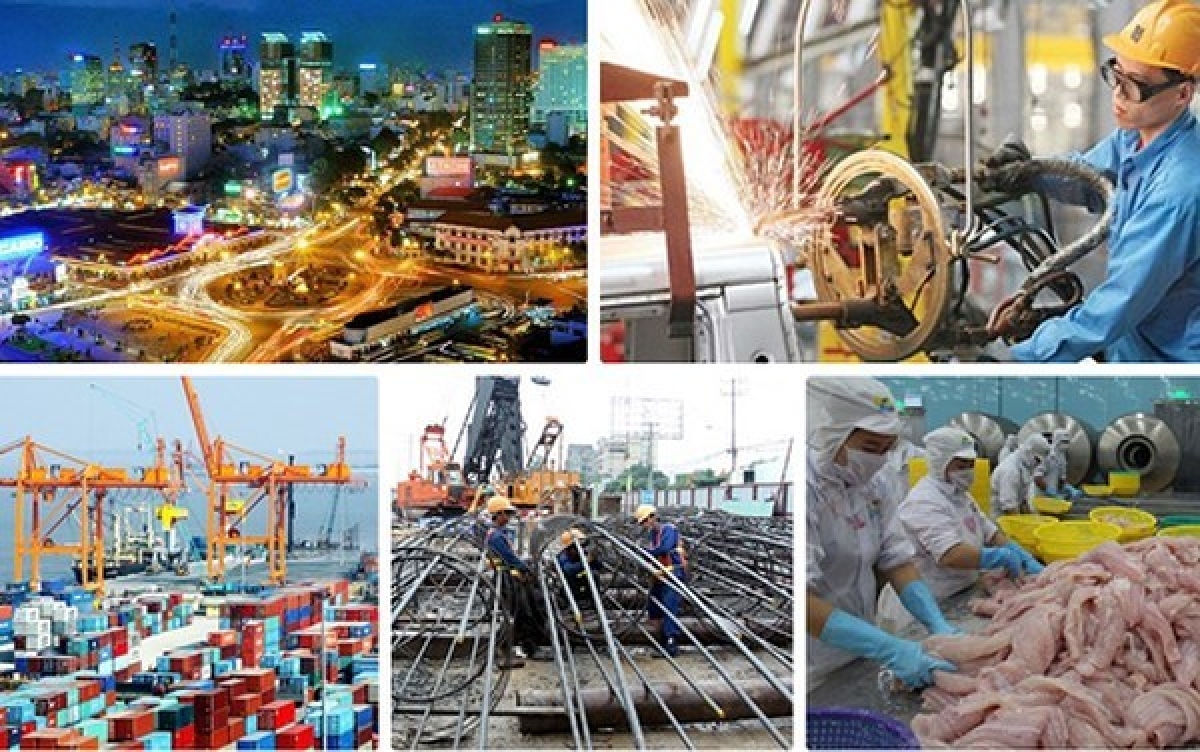IHS Markit optimistic about Vietnam’s economic recovery from COVID-19 wave
VOV.VN - Latest economic data for the final quarter of 2021 are showing signs of recovering economic momentum, and the IHS Markit Vietnam manufacturing purchasing managers' index (PMI) for October 2021 indicated a strong rebound in the manufacturing sector.
The remarks were made by the UK-based market research firm in a recent analysis published on ihsmarkit.com. However, the article said the economic recovery still faces headwinds due to a renewed upturn in daily new COVID-19 cases as well as continuing supply chain disruptions.
According to the article, with the domestic pandemic having remained contained, economic growth momentum strengthened in the first half of 2021. GDP growth in the second quarter of 2021 rose by 6.6% year- on- year, improving on the 4.65% year-on-year growth recorded in the first quarter of 2021. A key driver of economic growth momentum was the rapid growth of exports, which rose be 28.4% year on year in the first half of 2021. The strong performance of industrial exports also boosted the industrial sector, with industrial production up 9.3% year- on year in the first half of 2021. FDI inflows in the first half of 2021 remained resilient, at US$ 9.2 billion, up 6.8% year-on-year.
As daily new COVID-19 cases started to decline during the second half of September and early October, easing lockdown restrictions allowed the reopening of many factories, resulting in a sharp rebound in the IHS Markit Vietnam Manufacturing PMI to 52.1 in October, the article said.
During the third quarter, severe disruption to supply chains were noted by firms in the PMI survey results. Companies linked longer lead times to difficulties with transportation both domestically and internationally due to the pandemic, as well as raw material shortages. Manufacturers were also faced with surging input costs. Shortages of labour also contributed to rising backlogs of work, as migrant workers returned to their home provinces and towns during the protracted lockdowns and widespread factory closures.
It said the economic impact of the pandemic is expected to recede during 2022 as vaccination rollout becomes more widespread across the population of Vietnam.
Over the medium-term outlook for the next five years, a number of key drivers are expected to continue to make Vietnam one of the fastest growing emerging markets in the Asian region.
Firstly, Vietnam will continue to benefit from its relatively lower manufacturing wage costs. Secondly, Vietnam has a relatively large, well-educated labor force compared to many other regional competitors in Southeast Asia, making it an attractive hub for manufacturing production by multinationals. Third, rapid growth in capital expenditure is expected, reflecting continued strong foreign direct investment by foreign multinationals as well as domestic infrastructure spending. Fourth, Vietnam is benefiting as a potential market for companies in the current wave of shifting productions to Asia. Fifth, many multinationals have been diversifying their manufacturing supply chains during the past decade to reduce vulnerability to supply disruptions and geopolitical events.
Vietnam is also set to benefit from its growing network of free trade agreements, including the ASEAN Free Trade Agreement (AFTA), the Regional Comprehensive Economic Partnership (RCEP), and the EU – Vietnam Free Trade Agreement (EVFTA).
Despite these near-term risks, over the medium-term economic outlook, a large number of positive growth drivers are creating favorable tailwinds and will continue to underpin the rapid growth of Vietnam's economy. This is expected to drive strong growth in Vietnam's total GDP as well as per capita GDP.
Vietnam's total GDP is forecast to grow from US$270 billion in 2020 to US$433 billion by 2025, and rising to US$687 billion by 2030. This translates to very rapid growth in Vietnam's per capita GDP, from US$2,785 per year in 2020 to US$4,280 per year by 2025 and US$6,600 by 2030, resulting in substantial expansion in the size of Vietnam's domestic consumer market.
The country's role as a low-cost manufacturing hub is also expected to continue to grow strongly, helped by the further expansion of existing major industry sectors, notably textiles and electronics, as well as the development of new industry sectors such as autos and petrochemicals, the article said.

